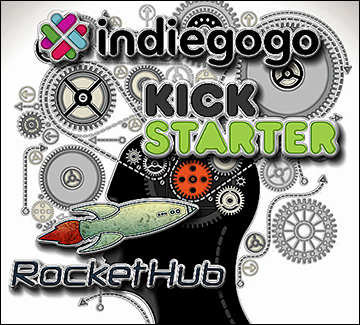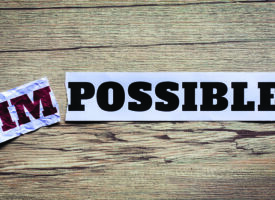Have you noticed? The brick towers of the publishing giants are shaking, as a revolution threatens to challenge the very foundation of the entire print media industry.
This time, we, writers, are the winners.
By now, we’ve all heard about Kickstarter, IndieGoGo, RocketHub, and the countless niche Crowdfunding sites that allow regular people with unique ideas, whether they be technologic, social, or artistic, to reach new audiences, raise money, and develop their projects.
 How it works is fairly simple—you build a project page, set a financial goal and time period, usually a few weeks, to raise money. Most sites operate under an all-or-nothing model, where you only get funded if you reach your goal. That is to say, if your target is $1,000 but you only receive $998 at the end of the campaign, you receive nothing. On the other hand, if you exceed your goal, you get it all.
How it works is fairly simple—you build a project page, set a financial goal and time period, usually a few weeks, to raise money. Most sites operate under an all-or-nothing model, where you only get funded if you reach your goal. That is to say, if your target is $1,000 but you only receive $998 at the end of the campaign, you receive nothing. On the other hand, if you exceed your goal, you get it all.
The most publicized Crowdfunding projects are usually technological—such as the recently launched $32 million campaign for an Ubuntu open-source smartphone (check it out here). However, more and more freelance writers are using these tools to raise money to conduct research, self-publish, or just allow for the freedom to write. For some, it is a new form of the prized “advance” that publishers once gave to aspiring new writers but has nowadays gone the way of the typewriter. Others use it to sell books directly to consumers, cutting out the middleperson.
How can this model work for us? According to Kickstarter, the largest Crowdfunding site, 56% of approved projects succeed in reaching their funding goal—so the potential is there. It is a matter of reaching the right audience with a well-developed project.
Below are three examples of successful writing projects, with an analysis of why they worked, and how you can incorporate their practices.
Success Story #1: Spirit Bear
Project: Children’s Book
Funded at: Kickstarter.com
Synopsis: Children’s books are ideal for Crowdfunding because they are inherently visual, and this author takes advantage of this by incorporating beautiful images into her project proposal.
Why it worked: A reasonable goal, fantastic art work, engaging video, post goal targets.
Lessons for freelance writers: One of the most important thing about Kickstarter is providing funders perks—incentives, essentially, to donate to your project. The author here offered ebooks, paperback copies of the book, wildlife photos, and more, with each perk befitting the contribution. She also clearly stated what she would do with extra funding beyond the goal—animations for the ebook—which allowed her to raise $5,000, more than $1,500 above her goal.
Success Story #2: Double-Happiness
Project: Non-fiction Book
Funded at: Kickstarter.com
Synopsis: Non-fiction books often require extensive research before they can become books. Crowdfunding allows us to raise money for this often full-time work. Others raise money for self-publication, or, as in this case, both!
Why it worked: Powerful video, a catchy
title, authority, sense of purpose.
Lessons for freelance writers: Think your project through before launching—how will you write it? Why are you, the person, to tell this story? Have a clear plan that
details how you intend to finish the project. List out how you will spend the money you raise. This gives potential donors a sense of your commitment, and creates an important sense of accountability.
Success Story #3: Darshan
Project: Fiction Book
Funded at: Kickstarter.com
Synopsis: Fiction Crowdfunding projects tend to be more of the self-publishing variety, because the idea often has to be fleshed out before it can reach an audience. This is just as true with traditional book publishing, in which non-fiction ideas can be sent as proposals, but fiction books usually need to be written before a publisher will consider it.
Why it worked: Clear goal, detailed timetable, and an engaging, funny, touching video.
Lessons for freelance writers: When we write, we usually focus on the story. But for Crowdfunding, we need to think not just about the story, but also the marketing—how can we sell it? You need to present your story as it would be read on the inside cover, and the video will be like a short TV advertisement.
Conclusion
A good crowdfunding campaign resembles a good book proposal:
- a short, compelling idea,
- a plan of action, and
- visuals that allow readers to understand the story you want to tell.
All three of these successful proposals were well-thought, had a defined audience, and a clear marketing plan. Each author spent considerable time planning and developing his or her Crowdfunding campaign, like how we spend hours developing our book ideas and proposals.
The main difference: with Crowdfunding, it is not editors you need to convince, but potential readers. And that is where the power of this tool lies, in its ability to connect us with our audience, to test our stories not with the narrow minds of editors, but with the vast, collective intelligence of crowdfunders, who, in increments as small as a dollar, can make our writing dreams a reality.
Just remember, as any good writer knows, your audience is your greatest critic.
Bonus info
Prepare, prepare prepare
Setting up a Crowdfunding campaign will take as much time, if not more, than writing a book proposal for non-fiction writers. Plan sufficient time to build a strong project!
Network
Do you have a Facebook profile or Author page? Are you on LinkedIn? Twitter? Before launching, develop your online network so that you can alert friends, families, and fans about your project when it launches.
Don’t forget Visuals
As writers, we focus on words, not pictures. However, the Internet is a visual medium, and many Crowdfund ideas fail because they lack an effective video or a compelling logo. Think of this as your book cover, a graphic that captures attention, and makes people want to read your story. It if often worth hiring an experienced photographer, graphic designer, or videographer to help develop this with you!
Want to see more successful Kickstarters? Click here to see what worked.
About the author:

Nithin Coca was born in San Diego, California to parents from South India and was infected with the travel bug at the age of two months, when his mom took him halfway across the world to India. 30 years and 44 countries later, he is now sure that there is no cure.
Today, he alternates between a home in California and traveling in Africa, Asia, and Europe. As a writer, he hopes to opens mind, create understanding, and spur action, even if it’s small, in tackling the world’s problems. He blogs at www.nithincoca.com.



